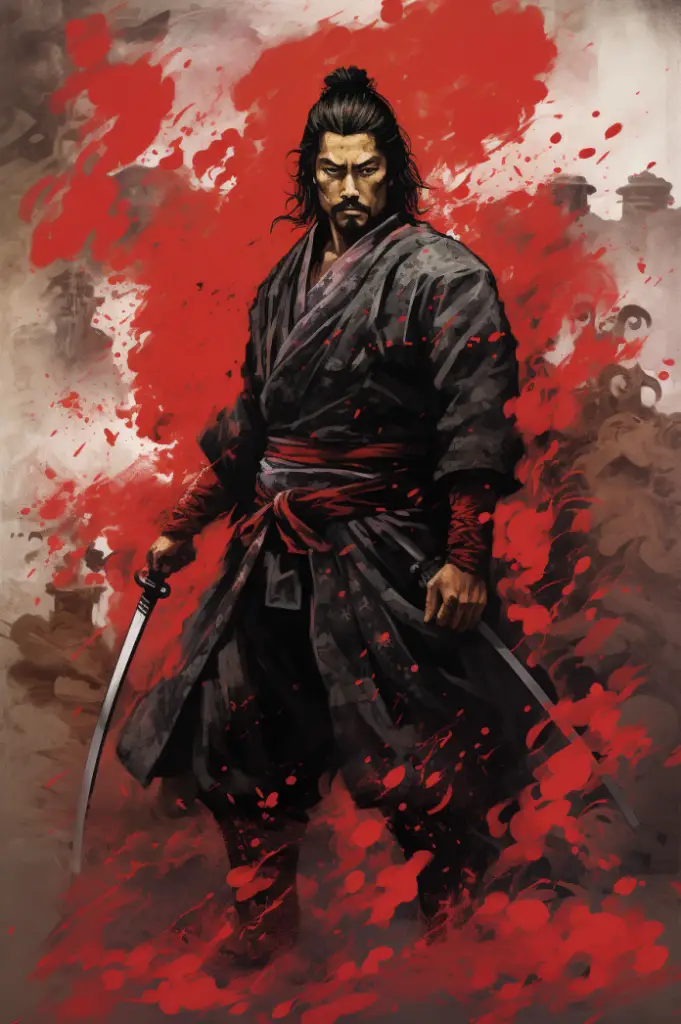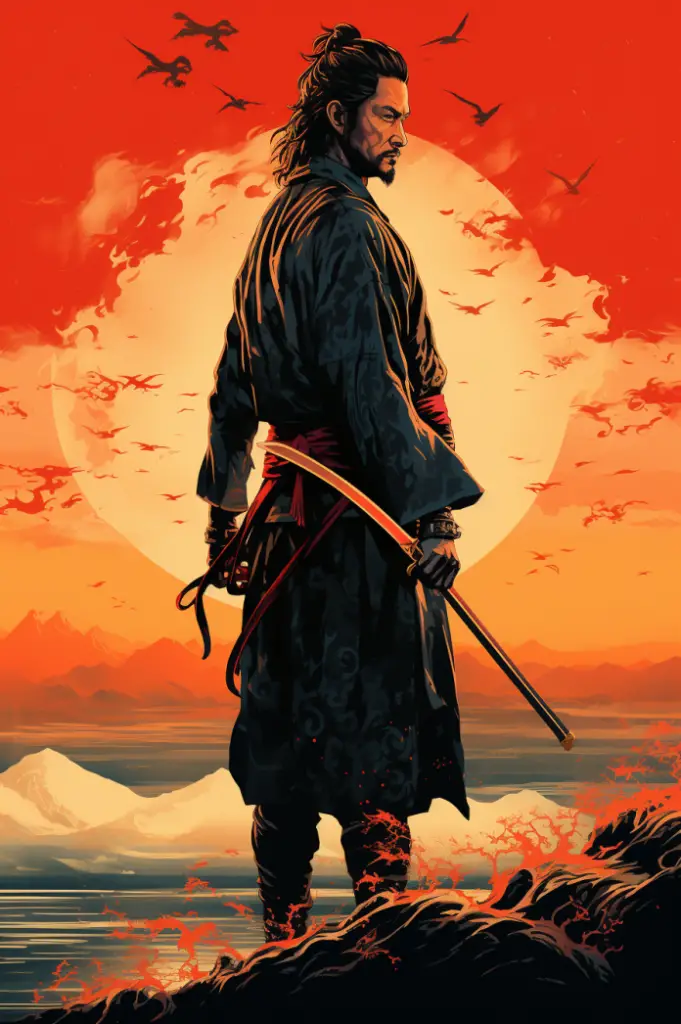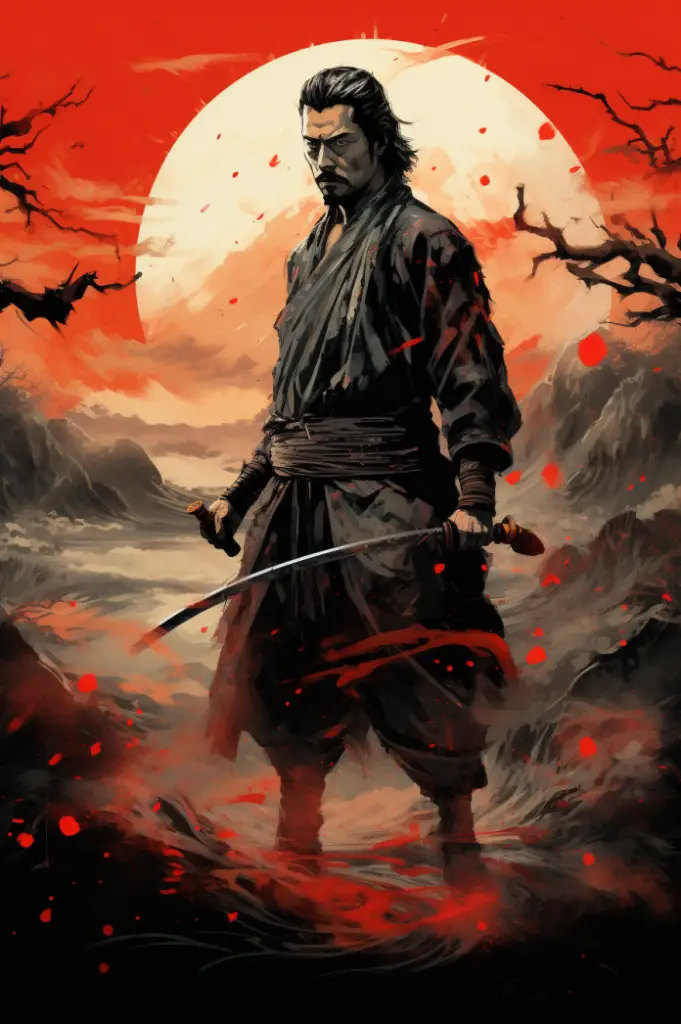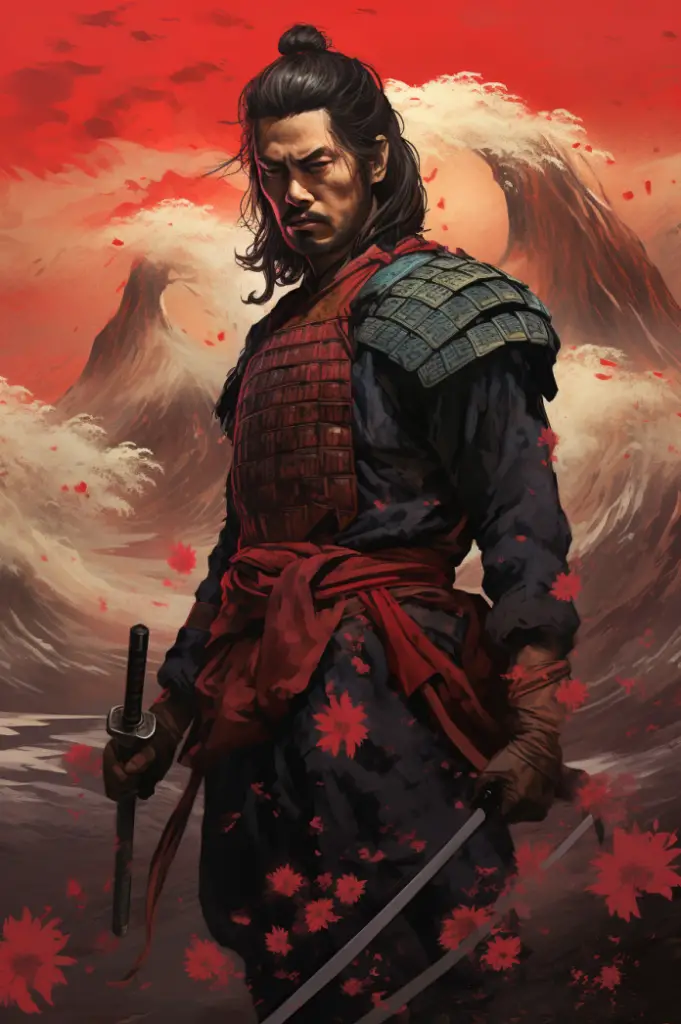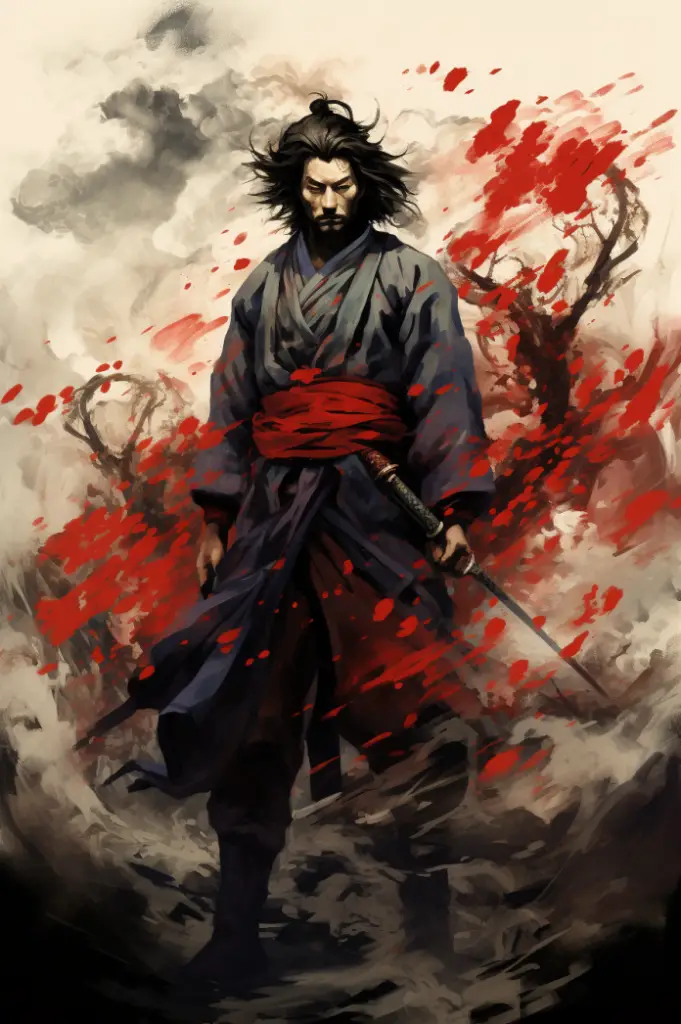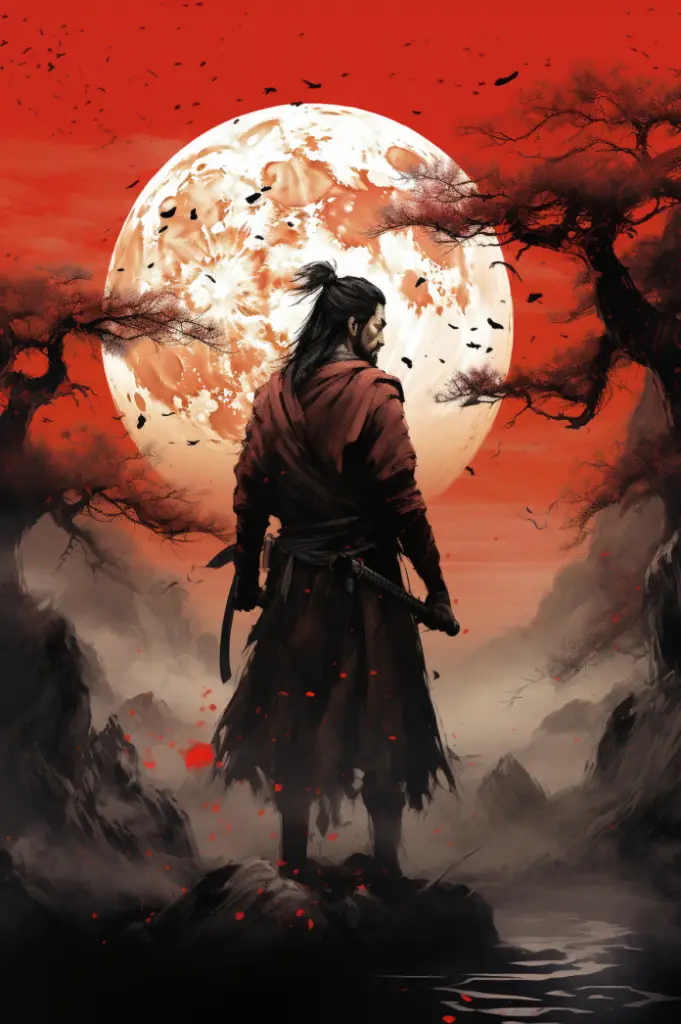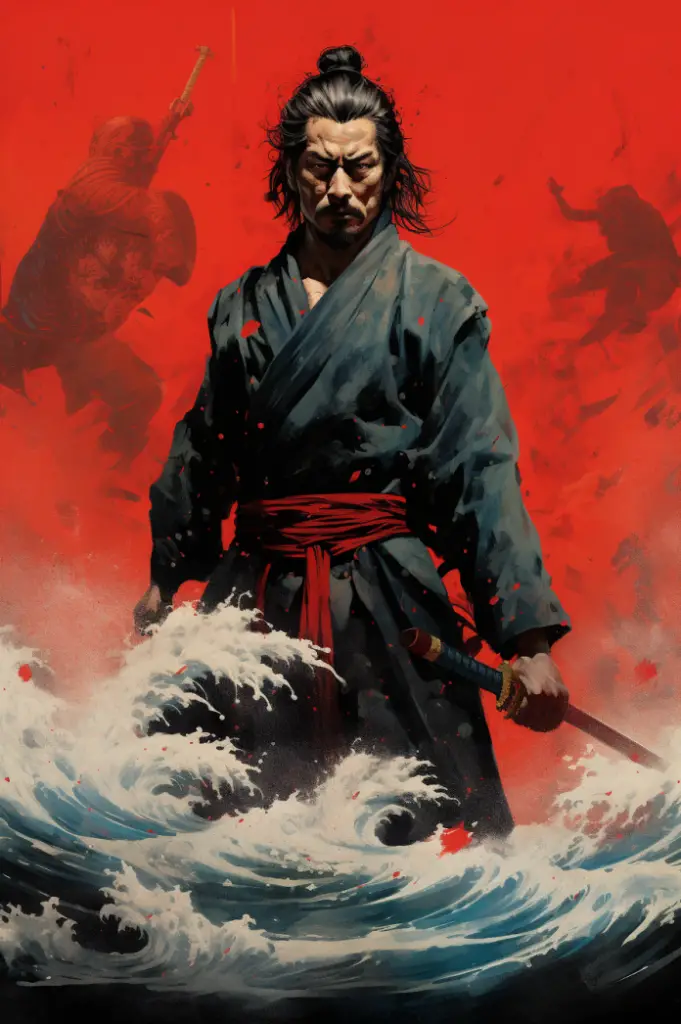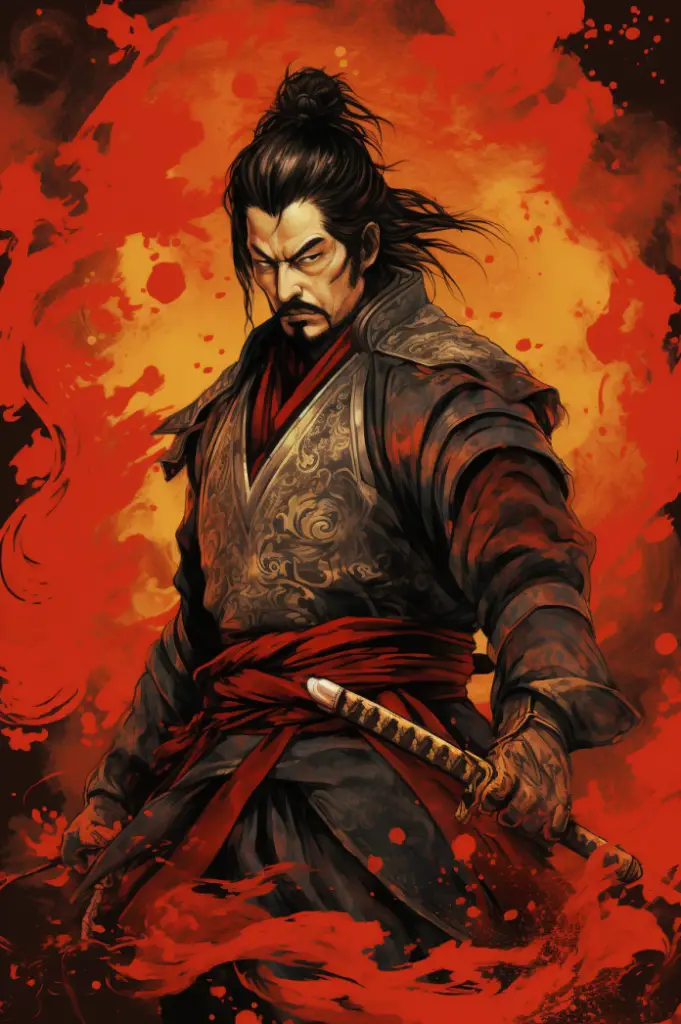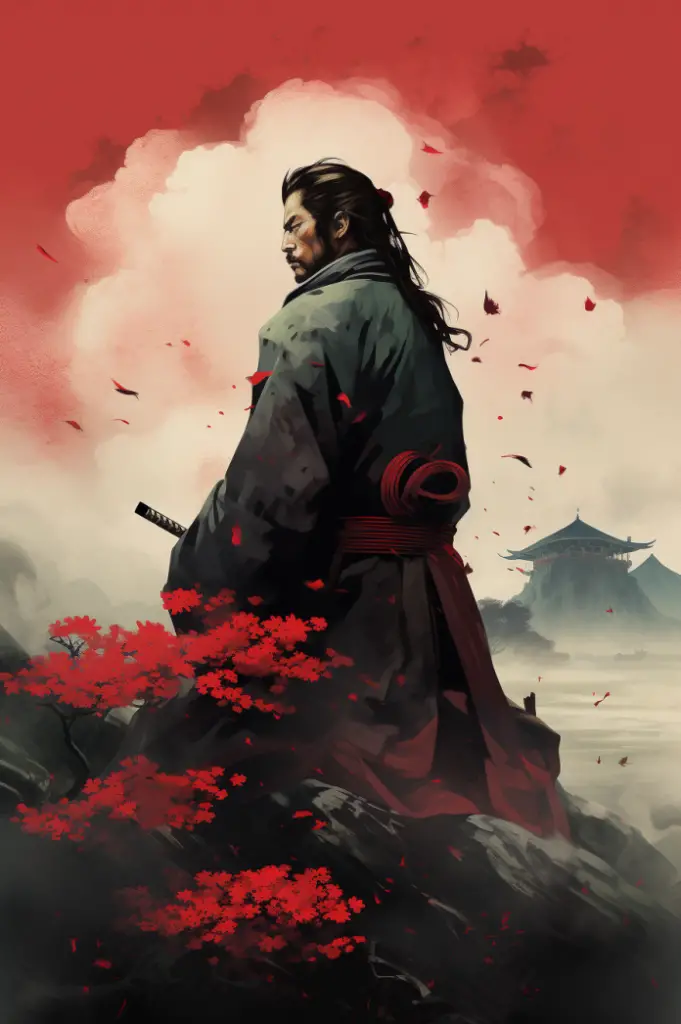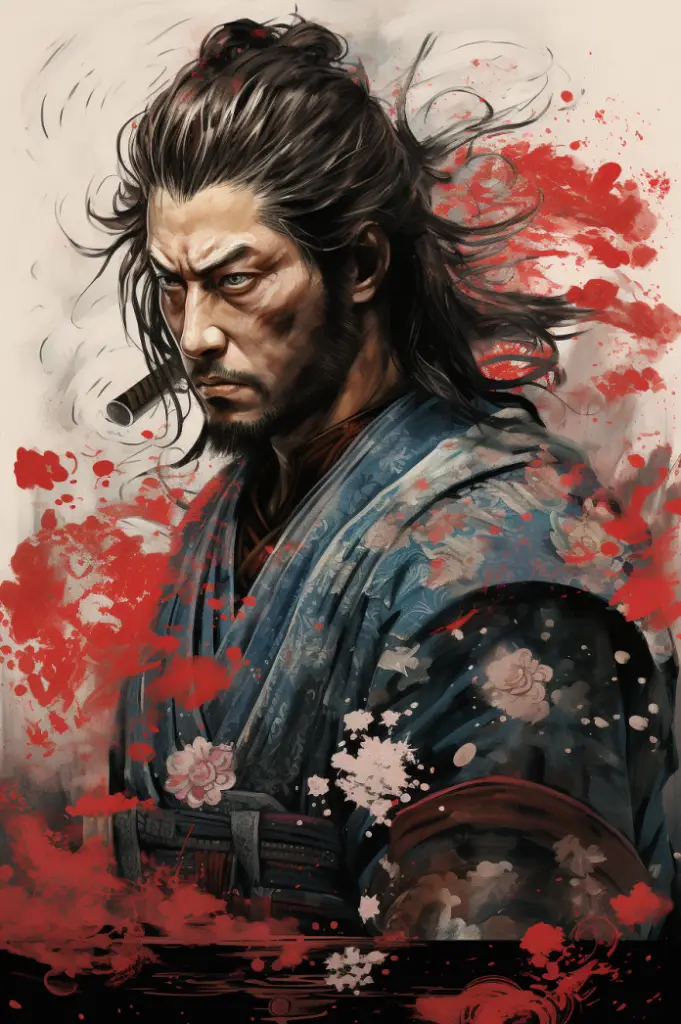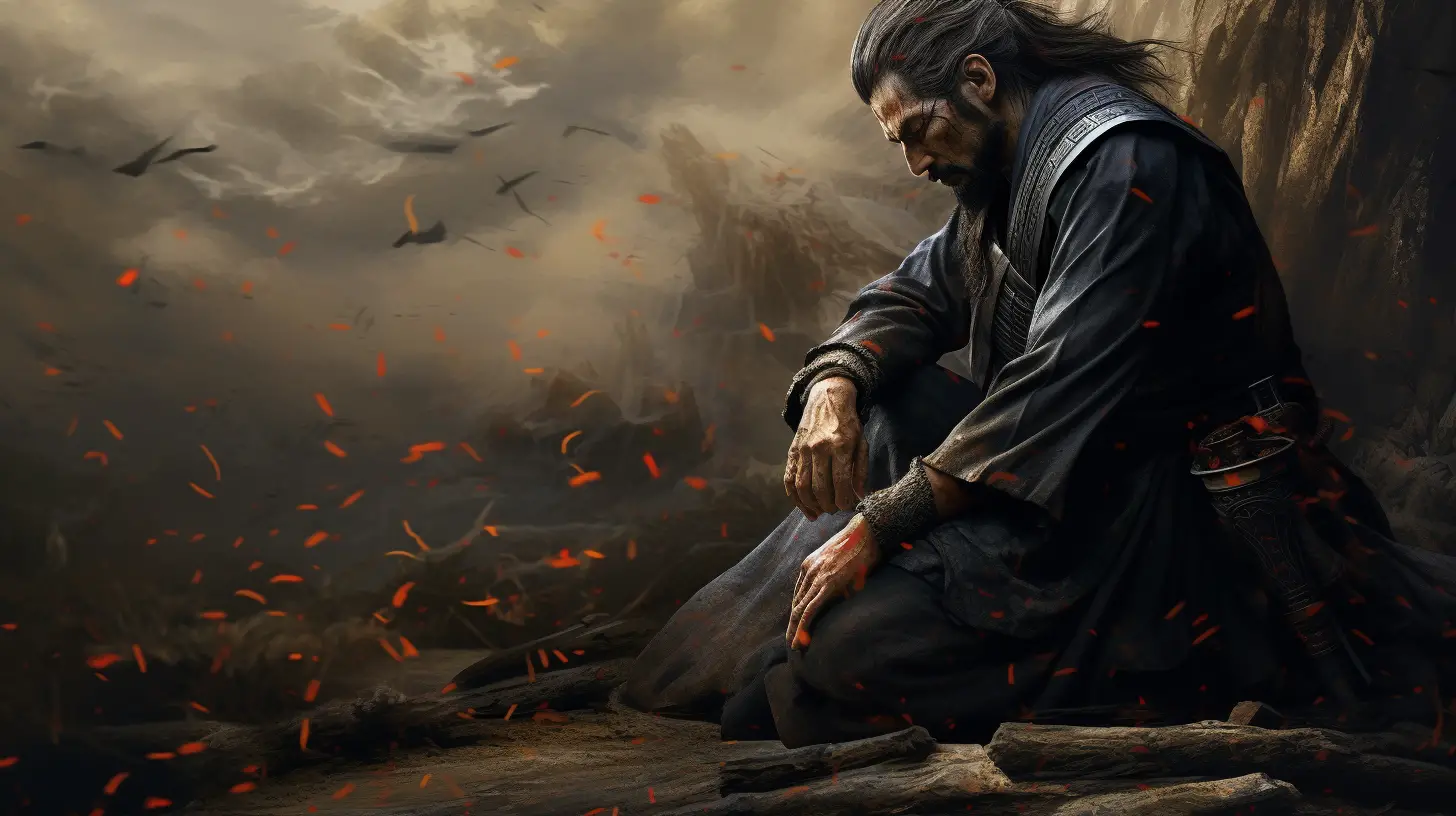Japan’s renowned swordsman and philosopher, Miyamoto Musashi, is a figure shrouded in legend. His feats as a duelist, his distinct martial art style, and his profound philosophical wisdom have made him a subject of fascination for historians, martial artists, and general readers alike. His image makes an awesome Miyamoto Musashi poster for your wall or desktop.
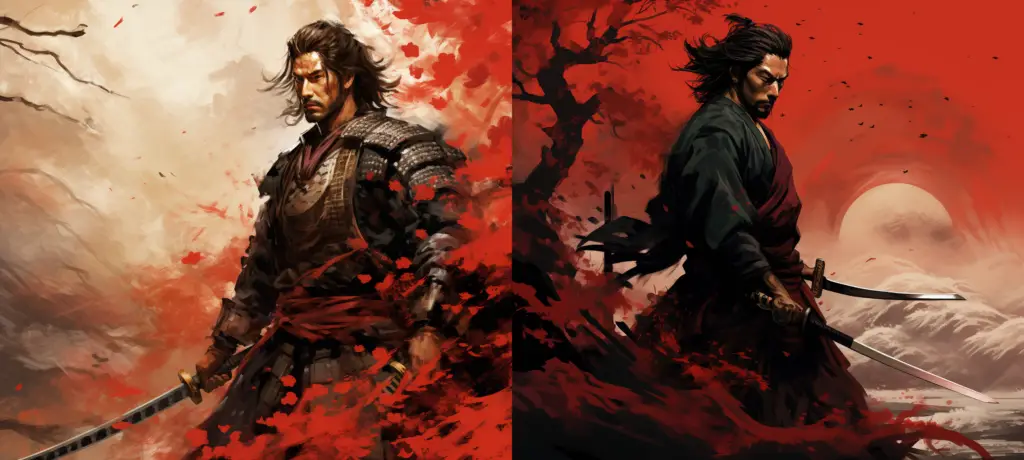
To further delve into this intriguing personality, and while you choose your poster, let’s explore ten interesting facts about Miyamoto Musashi that spotlight his unique life and enduring legacy.
1. Prodigious Start: Musashi’s martial journey began remarkably early. At the age of 13, he had his first duel against a samurai named Arima Kihei and emerged victorious. This victory marked the start of his reputation as an exceptional swordsman.
2. Undefeated Record: It’s reported that Musashi fought in more than 60 duels and never experienced defeat. His most famous duel took place in 1612 against Sasaki Kojiro, where Musashi triumphed using a wooden sword he carved from an oar.
3. Dual Sword Technique: Musashi developed a distinctive two-sword fighting style, known as Niten Ichi-ryu or “the school of the strategy of two heavens as one.” This innovative approach, using both a katana and a wakizashi, was unconventional but proved highly effective.
4. Author of a Martial Arts Classic: Musashi penned “The Book of Five Rings” (Go Rin No Sho), a text revered by martial artists and strategists worldwide. It provides profound insights into martial strategy and philosophy, marking Musashi as a master strategist and philosopher.
5. A Diverse Artist: Beyond the realm of martial arts, Musashi demonstrated talent in traditional Japanese arts, including ink painting and calligraphy. His artwork, much like his martial prowess, reflects his keen eye for detail and profound understanding of life.
READ MORE: Miyamoto Musashi iPhone Wallpapers
6. Life as a Ronin: Musashi spent much of his life as a ronin, a samurai without a lord. He travelled extensively across Japan, perfecting his martial arts, engaging in duels, and disseminating his teachings.
7. Self-Taught Samurai: Despite his legendary status, Musashi didn’t have formal samurai training. His skills were largely self-taught, honed through real combat experiences and disciplined self-study.
8. Retirement in a Cave: In his later years, Musashi retired to Reigandō, or “Spirit Rock Cave,” in Kumamoto. It was in this cave that he composed his famous “The Book of Five Rings.”
9. Final Words of Wisdom: Prior to his death, Musashi documented “Dokkodo” (“The Way of Walking Alone”), outlining 21 precepts for leading a disciplined, principled life. This work provides a window into his philosophical depth and enduring wisdom.
10. His Grave: Musashi was buried in armor, as per his wishes, in the village of Yuge, close to Mimasaka in the Okayama Prefecture. His grave remains a site of pilgrimage for many who admire his legacy.
READ MORE: Miyamoto Musashi Praying: His Spirituality, Beliefs and Practices
Musashi was a man of extraordinary depth and diversity and all of these ten Miyamoto Musashi posters make an amazing visual display. His unparalleled martial prowess, insightful philosophy, and artistic capabilities make him a unique figure in history. These ten facts provide just a glimpse into the fascinating life and enduring legacy of this legendary swordsman, illustrating why Musashi continues to inspire and intrigue people centuries after his death.
